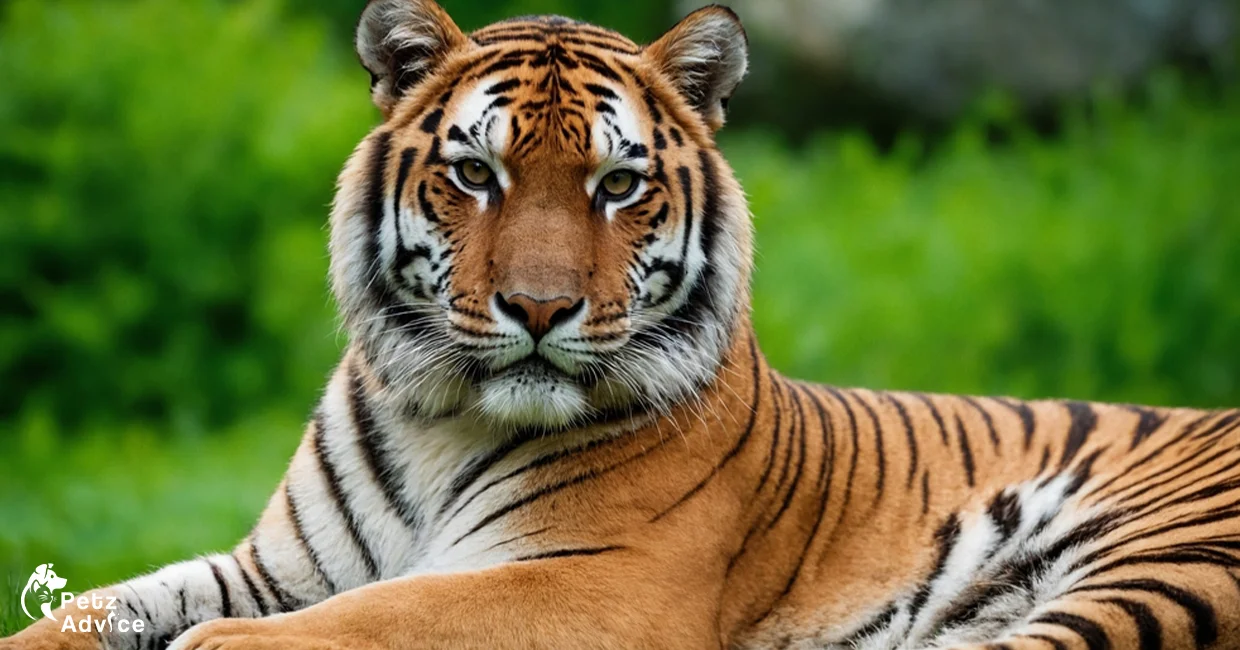Tigers frequently appeared as one of the maximum ferocious and majestic predators in the wild. As apex hunters, we’ve continually been quite inquisitive about tigers and what makes them so interesting. Sadly, the tiger‘s habitat has fallen by way of ninety five percent within the previous 150 years. Today, there are only around three,900 to five,000 tigers left inside the wild.
Are you curious to find out more about tigers and what makes them stand out among different big hunters? We’ve been given the rundown on how lengthy tigers stay and what elements affect their lifespan.
A Quick Crash Course on Tigers
The tiger is the world’s biggest wild cat, distinguished through its reddish-orange coat with black stripes. The tail alone of this huge cat is three ft long. Tigers may come to be as long as eleven toes long and weigh up to 660 kilos. The Sumatran Tiger, Siberian Tiger, Bengal Tiger, South China Tiger, Malayan Tiger, and Indochinese Tiger are all subspecies of the tiger.
As such a robust and ferocious predator, tigers hunt alone most of the time. They are able to take down animals as huge as deer or antelopes. Tigers will wait until darkish to start looking and will charge at their prey with their teeth and massive claws. Interestingly, there were new studies that found that the reason why tigers have evolved to be orange is that their prey sees them as green. Deer, the primary food of tigers, can best perceive blue and green mild, thereby rendering them colorblind to purple. As a result, tigers seem green to deer.
In preference, person tigers are solitary creatures and like to live alone. Based on the trees around him, a tiger can inform if he is in another tiger’s territory. Each tiger leaves urine and exclusive scratches on the bushes in its territory.
How Long Do Tigers Live?
A tiger inside the wild can stay up to 15 years. In captivity, their lifespan is 20 to 26 years. As may be predicted, the lifespan of a tiger is substantially extended whilst they’re privately owned or kept in zoos. This is due to the fact they no longer ought to worry about hunting for meals or being uncovered to harsh weather styles.
Let’s take a look at a number of the oldest recognized tigers:
- Guddu, the arena’s longest surviving male Bengal tiger, died in Kanpur Zoo in India at the age of 26.
- Prior to Guddu, the report changed into held via Flavio and Ramu tigers, both of which died after they had been 24 years old.
- The Machali tigress, the world’s oldest girl tiger, died at the age of 20.
- Now that we have a higher know-how of the tiger lifespan, let’s take a look at their common existence cycle.
The Average Tiger Life Cycle
How exactly do tiger cubs go from such small and lovable animals to the ferocious hunters they come to be? Let’s take a look at the common tiger lifestyles cycle.
For starters, tigers have 4 life degrees: new child, kid, younger person, and a fully grown person.
Newborn tigers
A new child toddler tiger is called a cub. When they are born, cubs weigh on average between three kilos. For the first 8 weeks in their lifestyles, they will be hid and safeguarded in the comfortable cave that their mother constructed before their delivery. They are nursed by their mother for the first few weeks in their life. At around six to 8 weeks of lifestyles, the mother will begin to introduce meat to the cubs.

Child
When the cub reaches the age of two months, it’ll be authorised to leave the safety of the den. Over the path of the following few months, they may spend time getting to know how to hunt independently. This is carried out by each watching and doing practice hunts. They are generally able to look for themselves by the age of 18 months. Nonetheless, each man and woman will continue to be with their mothers till they may be around 2.Five years vintage. Tigers have a rather high infant mortality fee. Fewer than half of all cubs born live to tell the tale to the age of two.
Young Adult
Once they attain the age of early life, tigers abandon their mothers for truth. Despite the truth that they’re not dating, the girls pick out territory near their mother. Males should go a long way in addition to set up a territory.
Conclusion
Today, the most critical threats to tiger populations are habitat loss/fragmentation and poaching. The IUCN Red List classifies the tiger as endangered. The global wild tiger population become anticipated to be among three,062 and three,948 adult animals as of 2015, with the bulk of the populations dwelling in small isolated enclaves. Other estimates of the tiger populace now positioned them at over five,000 tigers in the wild.
Tigers have been overhunted with the aid of people for his or her fur in addition to different body parts which can be used in traditional drug treatments. Tiger bones had been used in traditional Chinese medicinal drug for heaps of years to relieve tension and treat ulcers, bites, rheumatism, convulsions, and burns.
Tiger habitat has also been critically depleted as humans have advanced land for agricultural and wood functions. When land is altered for agricultural reasons, logging, and land conversion for home animal grazing there’s habitat loss and fragmentation that negatively impacts the tiger’s natural habitats.
However, there may be optimism that those large cats may also make a comeback in Russia’s Siberian area. According to the most recent data from the subspecies’ domestic in Russia, the Siberian tiger populace is at the rise. Conservationists envisioned 423-502 Amur tigers in Siberia ten years ago. However, the Russian authorities and WWF said final month that the wide variety of tigers had expanded to 480-540, such as an expected hundred cubs.


